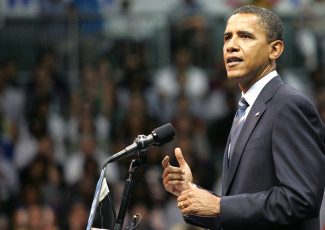Presidential Hopefuls Give Early Glimpse of Higher-Ed Views
By Dennis Pierce
September 1, 2015
A look at Clinton’s and Sanders’ proposals for student success
Earlier this month, Democratic presidential candidate Hillary Clinton announced a comprehensive plan to make college more affordable, boost completion rates, and reduce student debt. The crux of her plan would make community college available to students tuition-free, and students would be able to attend a public four-year college or university without having to take out a loan.
Clinton’s plan, called the New College Compact, has some similarities to legislation introduced in May by Sen. Bernie Sanders of Vermont, Clinton’s rival for the Democratic Party nomination. But Sanders’ plan would go a step further, offering free tuition to any student attending a two-year college or a public four-year institution.
Clinton’s plan would provide money to states that guarantee “no loan” tuition at public universities, based on the number of in-state students they enroll — with higher dollar amounts for low- and middle-income students. In return, states must continue to invest their own state dollars in higher education and must work with colleges to keep tuition low.
Families would be expected to make a “reasonable” contribution to their children’s education, and students would be expected to work 10 hours per week to support the cost of tuition at a four-year institution. Pell grants aren’t included in Clinton’s no-debt formula, and she says lower-income students would be able to use this money to cover the cost of books and living expenses.
Clinton’s plan also includes several ideas aimed at improving the nation’s 60 percent completion rate. For instance, the plan would offer grants to colleges that invest in child care, emergency financial aid and other interventions.
Both Clinton and Sanders have called for simplifying the Free Application for Federal Student Aid, lowering interest rates for undergraduate students and allowing borrowers to refinance their student loans at lower rates. (Sanders wants to bring loan rates down for all college students, not just undergraduates.) In addition, Clinton’s New College Compact would implement an income-based repayment program for student loans, so borrowers would never have to pay more than 10 percent of what they earn.
Clinton also supports a controversial bipartisan bill that would require colleges to pay a portion of the debt when their graduates default on student loans, so colleges share in the risk and have some incentive for helping graduates find meaningful employment.
The New College Compact is expected to cost $350 billion over 10 years and would be paid for by eliminating some itemized tax deductions for high-income families. Sanders’ “College for All” legislation calls for $47 billion in funding for 2016 and “such sums as may be necessary” for the nine years thereafter. Sanders would impose a tax on certain Wall Street transactions to pay for his plan.
While it’s still very early in the campaign season, so far no major Republican candidate for president has come out with a plan to address college affordability or completion, and only Florida Sen. Marco Rubio has specifically addressed student debt.
Rubio calls for greater transparency from colleges to give students and their families the “facts” about their degree of choice at a given college before taking out loans. His Student Right to Know Before You Go Act aims to give students reliable data on how much they can expect to make — and owe — when they graduate.
None of the top Republican candidates responded before press time to requests for comments about Clinton’s plan or information about their own higher-education views. But in a statement on his campaign website, former Florida Gov. Jeb Bush called the New College Compact “irresponsible,” adding, “We don’t need more top-down Washington solutions that will raise the cost of college even further and shift the burden to hardworking taxpayers.”








